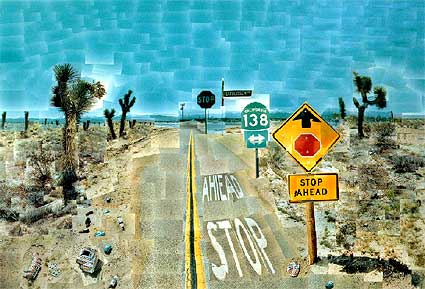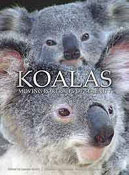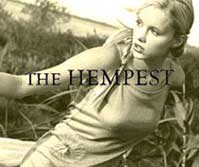100 mile diet

'Pearblossom Highway' David Hockney
Several years ago under the Clinton Administration a program began aimed at reducing the shortfall in production by local farmers who were being paid not to grow particular food crops. At the same time consumers were asked to pay higher prices for transported produce. The program was simple, allow farmers to grow kitchen gardens; gardens used traditionally by farm families to supply their own needs and sell the excess fresh produce at local farm markets. The growers received additional income which was tax exempt and the consumer received fresher produce at a lower price. More importantly low income families could use government food stamps, which was a real plus for struggling inner city communities.
I shopped regularly every Saturday at the Baltimore Farmers Market and experienced first hand the freshness, the quality of the market goods. It was a pleasant community affair where you could meet neighbors and local farmers in a city fair-like atmosphere.
The program did several things right and seemed to impress everyone with its good, common sense approach to identifying a problem at the local level and, thinking globally, plot a solution that in turn could be applied locally. Unfortunately politics ended the process shortly after the 2000 election.
Now however a similar process has begun known widely as the 100 Mile Diet. Thanks to Rural 2.0 we were able to visit this website in Vancouver, CA and see the program in action. The 100 Mile Diet is no food fad, rather it is a food coop that delivers custom food orders to its members at market prices and all gleaned from within a 100 mile radius of the consumer's home; you get local produce and dairy as well as meat and poultry if you like and fruit in season all grown locally, organic if you choose. The cost saving to the environment is significant, eating locally means all but eliminating the high cost of long distance transportation and, it goes without saying the freshness and quality increases greatly.
While researching this article we came across another benefit that has largely been overlooked: eating within a 100 mile radius of your home ground means that you are also naturally immunized to the local antigens in the soil. Antigens are biologic materials that subsist in the soil and cause illness through immunological reactions -think hay fever. A healthy person becomes immune to the antigens in his or her own environment. However consuming food that is raised, fed or grown in another environment means that slightly differentiated biologic irritants in the air, soil and water make their way through the food chain into our diet and are responsible for much of the increase we see today in allergic reactions and increased sensitivity to the environment, especially among children and people with weakened immune systems.



12:36 PM









<< Home